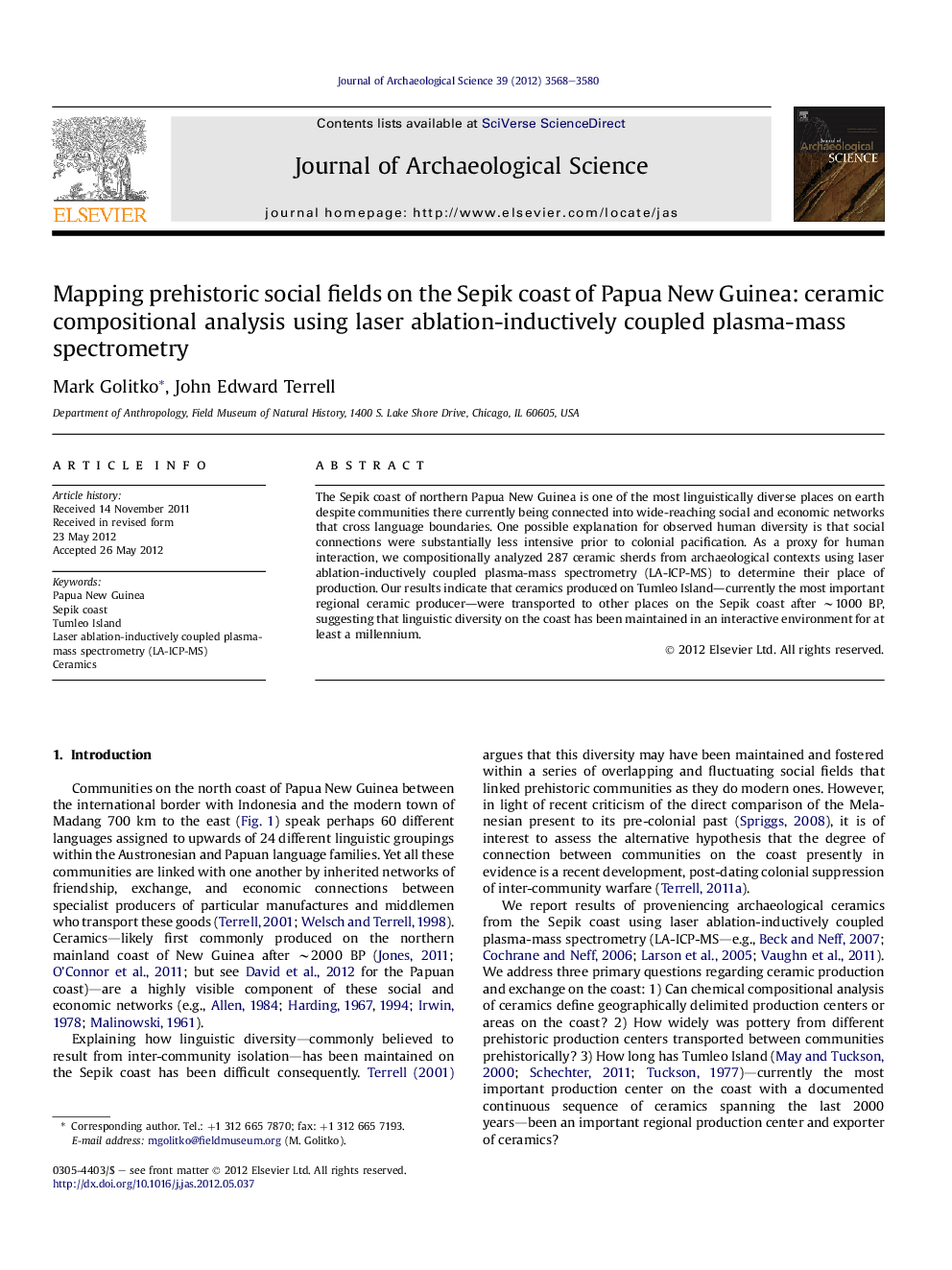| Article ID | Journal | Published Year | Pages | File Type |
|---|---|---|---|---|
| 1035649 | Journal of Archaeological Science | 2012 | 13 Pages |
The Sepik coast of northern Papua New Guinea is one of the most linguistically diverse places on earth despite communities there currently being connected into wide-reaching social and economic networks that cross language boundaries. One possible explanation for observed human diversity is that social connections were substantially less intensive prior to colonial pacification. As a proxy for human interaction, we compositionally analyzed 287 ceramic sherds from archaeological contexts using laser ablation-inductively coupled plasma-mass spectrometry (LA-ICP-MS) to determine their place of production. Our results indicate that ceramics produced on Tumleo Island—currently the most important regional ceramic producer—were transported to other places on the Sepik coast after ∼1000 BP, suggesting that linguistic diversity on the coast has been maintained in an interactive environment for at least a millennium.
► We analyzed 287 ceramic sherds from the Sepik coast of northern Papua New Guinea. ► Eight compositional groups, one associated with production on or near Tumleo Island. ► Exchange on the coast significantly predates colonial pacification. ► Transported Tumleo Island ceramics identified only after 1000 BP
